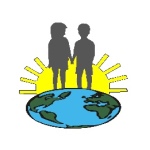Caffeine plays a prominent role in American culture. We sell more cups of coffee in the United States than any other beverage. It’s also an ingredient added to many soft drinks, included in several foods, and added to medications to give them an extra boost. Slowly but surely, caffeine intake has also been increasing among our kids, primarily due to the increased consumption of soft-drinks and energy drinks. While a little caffeine won’t hurt your child, too much of it can result in many unintended side-effects, ranging from mild to severe.
In addition to potentially making a child hyperactive, caffeine works its wonders by essentially triggering the body’s physiological fight or-flight stress response. In reasonable amounts this wonder drug can help one stay alert or provide better concentration. Small amounts can even improve overall health by getting the heart pumping a little faster and inducing a physiological response, much akin to how exercise strengthens ones health. (Though to a much lesser degree) But in doses too high, you’re essentially putting your physiology into a stress overdrive. When people consume a lot of caffeine, their body produces more cortisol, and pumping high amounts of cortisol into your body (the stress hormone) is never advisable, especially for children. Though we know of no studies related specifically to caffeine, other studies show serious effects of too much cortisol. It can cause a child to develop a hypersensitivity towards it, which means their brain rewires itself with more cortisol receptors, thus increasing their sensitivity and susceptibility to stress in general. The effects can be permanent. With this in mind, we have a couple recommended guidelines for parents to follow when it comes to kids and caffeine:
1. Young kids should never get energy drinks. They’re the only portion of the population who shouldn’t need boosts to get their energy levels up. If they do, there are some serious lifestyle problems (lack of sleep, etc.) resulting in such lethargic behavior. Fix this instead. Most energy drinks are essentially liquefied caffeine pills (with tons of sugar added). This combination leads to monumental crashes afterwards, which result in some pretty serious mood swings that aren’t beneficial to you or your child. These drinks simply contain too much caffeine.
2. Most physicians recommend limiting a child’s caffeine intake as much as possible. We’re not advocating prudish all-out restriction; moderation is the key. It’s not going to hurt a child to have a cup of coffee here and there, or a soda or soft drink. Just watch the amount. You don’t want them to develop a habit, (there will be plenty of time for that later), or pump their small body full of too much caffeine. Try to limit them to one or two sodas a day on most occasions, and they shouldn’t be drinking coffee on a regular basis. Save it more for special occasions. Remember, parents can raise the threshold higher or lower in any particular area of life by what they do in childhood. Parents who exercise with their ~ids and ensure healthy eating habits reward them with a fit body and good health that will come naturally in adulthood. Likewise, when parents start a caffeine habit in childhood, this can readjust the barometer and lead to a person who in adulthood must have 7 or 8 cups of coffee a day in order to function versus one who is perfectly happy with one or two. This is why we say it’s so important to keep the threshold below that which will develop a habit. When a chemical habit of any kind is formed, you’re putting that substance between yourself and your daily functioning. Children certainly don’t need to be introduced to any chemical habits in their early life. Caffeine Content by Type of drink:
Drink Name ……………………… Can Size (in fluid ounces) ……… CaffeineContent (Mg)
Amp ……………………………………. 8.4 …………………………………………… 75
Full Throttle …………………………. 16 ……………………………………………. 144
Monster ……………………………….. 16 ……………………………………………. 160
No Fear ……………………………….. 61 ……………………………………………. 74
Red Bull ………………………………. 8.3 …………………………………………… 80
Rockstar ………………………………. 16 ……………………………………………. 160
Sobe Adrenaline Rush …………… 8.3 ……………………………………………. 79
Tab Energy ………………………….. 10.5 …………………………………………… 95
Fixx …………………………………….. 20 ……………………………………………. 500
Wired X505 ………………………….. 24 …………………………………………… 505
Bookoo Energy …………………….. 24 …………………………………………… 360
Other beverages for Comparison
Brewed Coffee ………………………. 6 ………………………………………………. 77-150, depending on strength and brand
Coca-Cola Classic …………………. 12 …………………………………………….. 34.5
Dr. Pepper ……………………………. 12 ……………………………………………… 41
Mountain Dew ……………………… 12 ……………………………………………… 54
Pepsi-Cola ……………………………. 12 ………………………………………………. 38
References:
1. Susan Cosier, “Coffee Breakdown,” Scientific American Mind, Vol. 20(4): 12, July/August 2009
2. B. McEwen & H. Schmeck, ‘The Hostage Brain,’ New York: Rockefeller University Press, 1994

